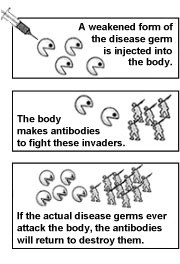Space. It was supposed to be the final frontier of discovery. On October 4, 1957 the Soviet Union launched its satellite Sputnik, kicking the race for supremacy of the skies between the United States and USSR into full throttle. Advances in space technology enabled humankind to walk on the moon, send dogs into orbit, and successfully land rovers on Mars. One could say we’ve come a long way.
But it turns out space wasn’t the final frontier. Over the past few decades, scientists have increasingly turned inwards for exploration. In the 1980s and 90s, mapping the human genome to unlock the mysteries of our DNA became the next big target. The Human Genome Project was an international effort spearheaded by the National Institutes of Health and U.S. Department of Energy to sequence the human genome as well as species such as fruit flies, influenza, and mice. It concluded in 2003 with the successful mapping of the human genome—a feat geneticists compared to the moon landing.
The journey inside continues. In 2008, the Human Microbiome Project was initiated to understand how the trillions of microorganisms such as eukaryotes, bacteria, and viruses found in and on our bodies affect our health. The human body contains about ten times as many microbial cells as human cells. Think about that for a second. By a cellular count, we are comprised more of microbes than ourselves. And the microbiomes in our gut are as individual to us as our fingerprints. Some of these strains we inherit at birth, others we gather over the years through diet. So does this mean health is more of a reflection of our genes or of our microbes?
The Microbiome Project aims to find out how these tiny microbial communities living (and thriving) in our nasal passages, urogenital, and gastrointestinal tracts work to keep us healthy, and how we might manage them to treat disease. For example, some microbes have been found to produce vitamins like folate in babies. However, separating and culturing individual microbes for study in experimental settings is largely impossible because many can’t be isolated for analysis. This is believed to be because they require specific environments for growth we haven’t been able to replicate in a lab setting.
The workaround this problem is metagenomics. Microbiologists use DNA sequences of microbial communities to analyze these populations in their natural habitat and compare them to strains they can isolate for a clearer picture of the roles they might play in our health. Understanding how these communities operate to protect against inflammation and infection could lead to advances in how physicians treat patients with debilitating conditions such as Crohn’s Disease.
Microbial samples were collected from 242 healthy adult men and women between the ages of 18 and 40 for the project. So far more than 1,300 reference strains that have been isolated from the human body have been sequenced to date. While the Microbiome Project is no longer recruiting participants, the American Gut Project, a similar mapping endeavor conducted by a consortium of university researchers around the world still is. So next time you’re looking up at the stars with wonder, consider the universe within you that remains unknown.
-KM

